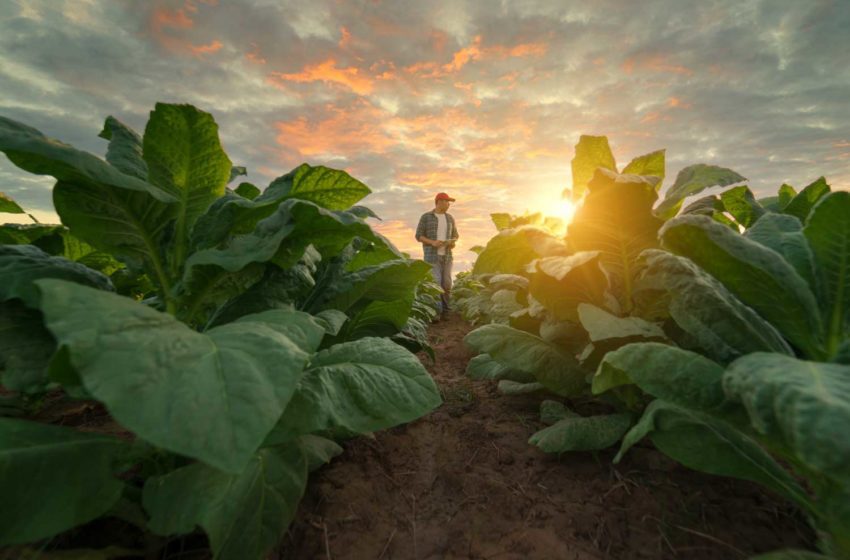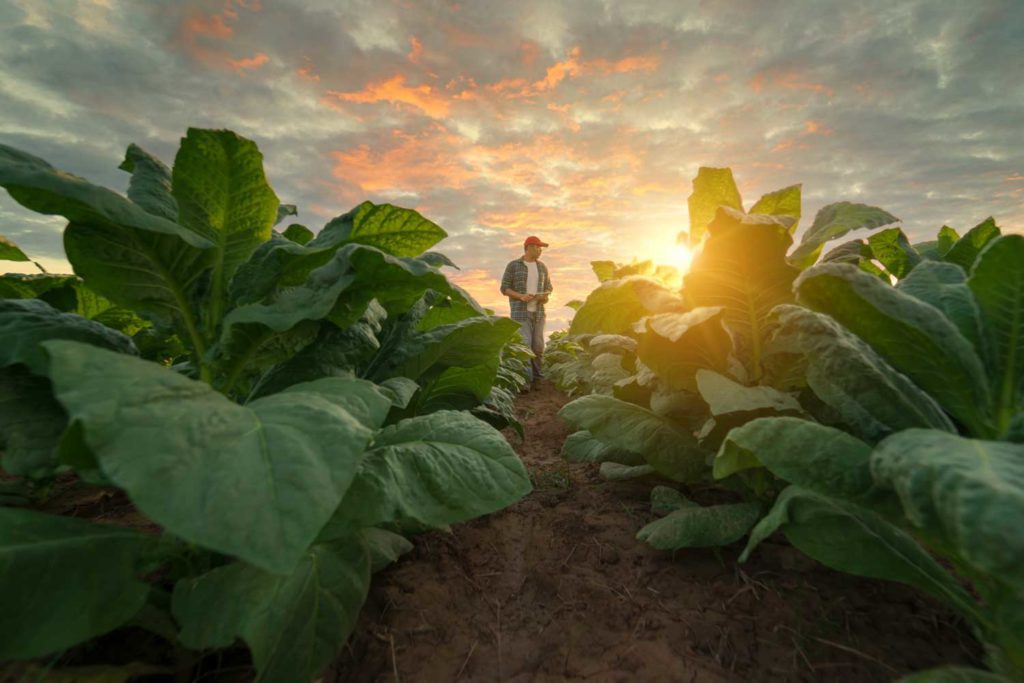New Hurdles Ahead
- Also in TR Leaf Print Edition
- January 1, 2022
- 0
- 0
- 12 minutes read


Growers discuss the challenges and opportunities facing their sector during ITGA’s annual Issues Day.
By Stefanie Rossel
Increasing regulatory pressure, sustainability, climate change and child labor emerged as the main challenges during the International Tobacco Growers’ Association’s (ITGA) Issues Day on Nov. 18. Due to the ongoing Covid-19 pandemic, the conference for took place virtually for the second year in a row.
The ITGA’s president, Abiel M. Kalima Banda, described 2021 as another year of limitations. Interestingly, though, the Covid-19 crisis wasn’t as bad for the tobacco industry as it was for other businesses, as ITGA’s CEO Antonio Abrunhosa pointed out. Especially in the main leaf countries, production went back up again, with markets returning to normal.
However, new regulations are presenting new challenges to farmers. For example, just one day before the ITGA meeting, the European Union executive outlined a draft law requiring companies to prove that agricultural commodities destined for the bloc’s 450 million consumers were not linked to deforestation. “The future of regulation will be tougher than it is now,” said Abrunhosa. “Growers will suffer the greatest part of sustainability issues. Buyers must be aware that farmers need a decent income to be sustainable and support their families.”
While burley witnessed another year of decline, flue-cured Virginia (FCV) volumes in Brazil, Zimbabwe, the U.S. and China experienced a boost, according to ITGA tobacco expert Ivan Genov, referring to data provided by Universal Leaf. An even higher growth rate is expected for 2022, but it is likely to remain below the range that was the norm before the pandemic. Growers are faced with steadily increasing production costs, Genov said. “The situation remains volatile; the pressure on the sector remains strong. Sustainability issues will increase and intensify further.”
Slight Recovery

World tobacco leaf production stood at an estimated 4.74 billion kg in 2021, with FCV production amounting to 3.47 billion kg, slightly up from 3.37 billion kg in 2020. By 2022, production is anticipated to reach 3.5 billion kg. Dark air-cured production remained stable at 111 million kg in 2021, whereas oriental declined from 155 million kg in 2020 to 128 million kg in 2021. Burley production declined to 411 million kg in 2021 from 446 million kg a year earlier. The latter crop is expected to recover next season, with production going back up to 468 million kg in 2022, which would still be below pre-Covid-19 levels.
Seven of the world’s top 10 tobacco exporters by volume saw declines in 2020. Brazil’s exports dropped from 530 million kg in 2019 to 485 million kg in 2020; China’s exports declined from 194 million kg in 2019 to 186 million kg in 2020; and India’s exports decreased from 186 million kg in 2019 to 177 million kg in 2020. Only Argentina and Turkey registered a minor increase in production for export, according to U.N. Comtrade figures.
In terms of value, Brazil finished first with $1.51 billion worth of tobacco exports in 2020, followed by Zimbabwe ($741 million) and the United States ($695 million). According to Universal Leaf, China will provide around 50 percent of global FCV production in 2021, followed by North, Central and South America with a combined 24 percent share. Africa and the Middle East, currently standing at 10 percent, are expected to increase production volumes in 2022.
Growers in the U.S. and Zimbabwe suffered challenging working conditions in 2020. The U.S. fought a trade war with China, whereas Zimbabwe was hit hard by Covid-19, which delayed auctions. On Nov. 8, the country’s ministry of lands and agriculture announced plans to generate more value from its tobacco sector. It aims to create a $5 billion tobacco industry by 2025.
Cigarette Value Under Pressure

Shane MacGuill, Euromonitor global lead for nicotine and cannabis, looked at the current key drivers in the global tobacco market. The Covid-19 disruption, he observed, has created both threats and opportunities. The pandemic will potentially have implications in the medium term regarding consumer choice and disposable income. Significant prevalence and visibility declines, caused by tobacco control, he noted, will probably be the long-term key driver. MacGuill expects this to ease a little in the future, though. Heated-tobacco products (HTPs) and nicotine pouches have broadened the nicotine universe and caused a fragmentation. “As a consequence, cigarette value will diminish over time,” he said. Regulatory innovation has been key in the tobacco space historically and is expected to continue, potentially even further. MacGuill singled out the “beyond nicotine” sector as another key driver.
In 2020, global cigarette volumes just held up, whereas value came under pressure, according to MacGuill. Excluding China, consumption stood at 2.79 trillion cigarettes. Illicit product accounted for 12 percent of cigarette sales.
The value of cigarette sales declined by 0.2 percent in 2019–2020, while stick equivalent value rose 1.4 percent. The overall value of the global cigarette market was $484 billion, and the global average pack price was $2.77, or $3.47 excluding China. Cigarettes represented an 84 percent share of total value sales (81 percent excluding China).
Between 2015 and 2020, total cigarette demand grew most in Ethiopia, Jordan, Egypt, Hong Kong, Cambodia, Brazil, Vietnam, Algeria, Lebanon and El Salvador—primarily developing countries that saw migration from other tobacco categories into the cigarette category and perhaps lower regulation and excise. Demand fell most in Japan, Sri Lanka, South Africa, Ukraine, Peru, the Philippines, Australia, Saudi Arabia, Lithuania and Greece. Here, the decline was pushed by a combination of strong regulatory measures, increased taxation and the rise of cigarette alternatives. HTPs were driving substantial cigarette volume loss, most notably in Japan.
Of the top 15 stick markets, Egypt, Vietnam, Bangladesh and India are expected to grow in stick/stick equivalent volume.
HTPs Heating Up
Global illicit cigarette trade dropped during 2020 as border closures and lockdowns interfered with illicit supply chains. However, MacGuill expects a return in growth, with illicit trade standing at around 15 percent eventually. Eastern Europe and Asia-Pacific will be among the most affected regions over the next five years as a result of affordability.
“HTPs will cement their place at the head of the vapor growth narrative,” MacGuill predicted. “With the leading growth markets between 2020 and 2025 including Russia, Germany, Poland, the U.S., Japan, Italy, Ukraine and South Korea. To consumers, availability, ease of use, the possible impact on health but also price are among the most important product features. In a consumer survey, lack of information on the products was named as the essential barrier for not using HTPs.”
Nicotine pouches reached a value of $1.2 billion in 2020. With benefits from lower barriers to consumers’ communication and—for the time being—less regulatory pressure, the segment is expected to grow by 40 percent to 2025.
During 2020, overall monthly nicotine use grew in 17 markets, possibly due to pandemic-related factors, such as boredom and stress, according to Euromonitor. While cigarette use mostly declined or stayed flat and e-cigarette use plateaued in some key markets, HTPs saw a significant uptake. Across formats, price remained the key product feature.
Many tobacco manufacturers see their future in “beyond nicotine” products, especially in the field of cannabis. According to MacGuill, investors are now assigning greater value to nicotine companies that are more diversified away from combustible products. Companies are also likely to focus more on cannabis as a potential substitute for their tobacco and nicotine products. Sales are set to reach $92 billion by 2026. Key trends in the cannabis space include a wider range of ingredients and formulations, targeting new populations, such as gamers, and new occasions, such as cannabis products in tins for dogwalkers.
More Regulation Looming

Michiel Reerink, corporate affairs director and managing director at Alliance One International, listed the outcomes of the ninth session of the Conference of the Parties (COP9) to the World Health Organization’s (WHO) Framework Convention on Tobacco Control (FCTC), which took place Nov. 8–13, 2021. Among other things, COP9 delegates agreed on the creation of an investment fund to support control activities and noted and deferred to WHO reports on technical matters including HTPs as well as on research and evidence on novel and emerging products without discussion or decision until COP10 in 2023.
In the EU, the Supply Chain Due Diligence Act will increase the industry’s regulatory burden. In March 2021, the European Parliament adopted a resolution on corporate accountability, which stipulates a due diligence requirement for human rights and environmental standards that is likely to be aligned with OECD and United Nations Guiding Principles. By now, 15 EU member states have adopted human rights at the supply chain level. “Suppliers should prepare for this legislation,” Reerink said. “Due diligence should already be part of their company code of conduct.”
Finding Alternative Livelihoods
Heliodoro Campos, manager of the National Tobacco Fund in Colombia (Fedetabaco), described the plight of small-scale tobacco farmers in his home country. The sudden exits of Philip Morris International and British American Tobacco in 2019 and 2020, respectively, left thousands of tobacco famer families struggling for alternative sources of income (see “Blueprint for Exit,” Tobacco Reporter, March 2021). A conversion plan that envisaged the cultivation of permanent crops, such as Tahiti lemon, for the 30 percent of families that are landowners and transitory crops, such as maize or yuca, for the remaining 70 percent of families who lease their land did not materialize, as Colombia didn’t provide the required financing.
Campos’ presentation was a cry for help. Stakeholders are now hoping that a new conversion plan that foresees the production of non-THC cannabis will yield better results. A pilot project is expected to provide insights into the cost of production and potential profitability next year. Campos said he was trying to find resources for this plan, also internationally.
Stepping up the Fight
Innocent Mugwagwa, senior manager of the Eliminating Child Labor in Tobacco Growing Foundation (ECLT), outlined the development of his organization, which has moved from focusing on implementing small projects in Africa in the first decade of the millennium to signing pledges of commitment with companies and addressing minimum requirements for businesses and human rights in the 2010s.
In 2021, the foundation started concentrating on technical assistance, supporting governments so that they can protect children’s rights and supporting businesses to prevent and remedy child labor. It will also cooperate more closely with the ITGA to strengthen famers’ voices in defining fair standards and educate farmers in languages they understand. “We already worked together with the ITGA in the education of farmers on Covid[-19],” Mugwagwa explained. Furthermore, the ECLT will leverage governments and businesses to support ITGA members’ and farmers’ efforts in combatting child labor.
The ITGA’s vice president, Jose Aranda, closed the conference by emphasizing that a unified voice and strengthened efforts were needed to fight the challenges. “We must understand that the new challenges to our sector are threatening, with increasing regulations and the growing popularity of products without tobacco. Some markets are already gone.”

Vázquez succeeds Abrunhosa as ITGA CEO
The International Tobacco Growers Association appointed Mercedes Vázquez as its new CEO during the organization’s 36th annual general meeting, which took place virtually Nov. 18-19. Vázquez succeeds António Abrunhosa, who announced his retirement after serving in the position since 1998.
Members expressed their gratitude and highlighted Abrunhosa’s role in positioning ITGA as a key player in the global tobacco sector.
“In my new role I will do my best to continue this learning process from all of you so I can ensure and reinforce the long-lasting relations with our partners so we can together overcome the common challenges we are facing in our sector,” said Vázquez.

